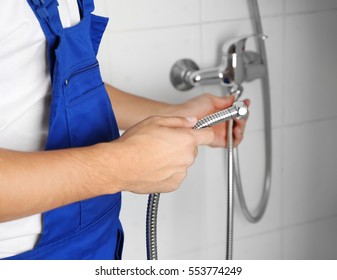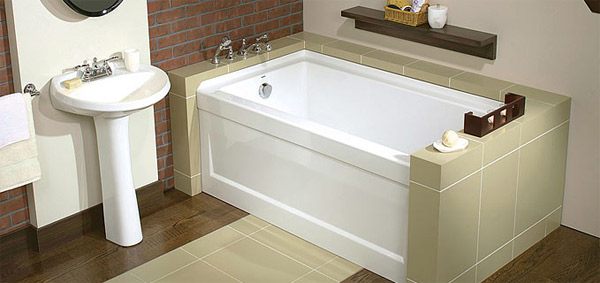Frequent Acrylic Bathroom Snags and Easy Solutions
Frequent Acrylic Bathroom Snags and Easy Solutions
Blog Article
We have discovered the article relating to 6 Things to Know About When Hiring a Plumbing Services directly below on the net and accepted it made sense to share it with you in this article.

Polymer baths, shower trays, and other acrylic shower room ware have ended up being extra usual in shower rooms in current times. Thanks to modern-day chemistry we currently have options to enamel and ceramic products for restroom components. These include various polers and plastic materials. Though not as long lasting and sophisticated as enamel and also porcelain baths and also components, they are a lot more affordable and also serve virtually the same basic function. These materials are easy to manufacture, store, as well as transportation and in the occurrence of damage, they are conveniently repaired. Some common examples of damage to acrylic bathroom fixtures include discoloration, cracks, holes, etc. Let's have a look at several of these troubles as well as quick ways of repairing them.
Scratched shower or bathroom surface
Acrylic restroom fixtures are not abrasion-resistant like enamel ranges. Being a very soft product, acrylic scratches can also be hidden without layer or dental filling. For these, you need to seek specialist assistance for your bathroom repair work.
Chain reaction
Occasionally, individuals attempt to repaint the entire surface of their acrylic bath by themselves either because they do not such as the color to conceal blemishes. You need to never ever use paint eliminator on acrylic bathrooms. Paint cleaners do not respond with the surface area of steel bathrooms, they ruin acrylic bathrooms irreversibly.
Bathroom Staining
With prolonged use acrylic bathrooms comes staining or staining. While some stains can be gotten rid of conveniently, utilizing unique chemicals, others require that the bath be resprayed. It is necessary to note that bleach or detergents do very little in removing such discoloration and they might even intensify it. Many times, these cleaning up agents induce staining gradually. Aromatherapy oils loosen the dirt in many cases consequently bring back the bath to its former splendor. Cleaning up and brightening additionally occasionally. For more stubborn spots, you will require a brand-new layer of coating. This sort of repairing will certainly call for a specialist.
Broken Polymer Baths
The lifespan of acrylic and also fiberglass bathrooms depends on 15-20 years for shower pans and baths, generally. Splits in an acrylic shower tray are possibly amongst the simplest issues to repair for a repair work expert. The very best component is you reach see the outcomes nearly right away. This coincides for PVC, material, and other such materials. A minute fracture need to be addressed in a timely manner before it spreads more causing more severe damages. While these can be chosen a spending plan tackily, a specialist can assist you get it finished with even more finesse for a charge. Quick residence repairs can be made with epoxy materials yet if the result turns out improperly, this would certainly make the fixing a lot more tough for a specialist.
Polymer bathrooms, shower trays, and various other acrylic shower room ware have actually ended up being a lot more usual in restrooms in recent times. You must never ever make use of paint remover on acrylic baths. Paint removers do not react with the surface of metal bathrooms, they damage acrylic baths irreversibly. With prolonged use of acrylic bathrooms comes discoloration or discoloration. The life-span of acrylic and also fiberglass bathrooms is up to 15-20 years for shower pans and baths, typically.
How to clean Acrylic shower
USE THESE NON-ABRASIVE CLEANERS
We recommend that you clean your acrylic bathing product made of Delta ProCrylic or Acrylic with Innovex Technology with non-abrasive soaps and cleaners, such as:
Dishwashing detergent Power Bathroom Cleaner CLR Bath & Kitchen Cleaner Formula 409 All-Purpose Cleaner Iron Out Rust Stain Remover When it s time to clean, always use a terry cloth towel, soft cloth or sponge to avoid scratching the acrylic surface. Don t use abrasive scrubbing pads, steel wool or sponges, cause permanent damage to the acrylic material. If you use a drain cleaner or clog remover, be sure to rinse thoroughly with water so no product is left standing near the drain.
Some chemicals and cleaners may deteriorate acrylic surfaces, causing cracks and, potentially, property damage. To avoid this, don t use cleaning products that state on their label that they are not suitable for use on Acrylic, ABS, Polystyrene or Plastic. Be sure to check the label of any product before you apply it to the surface; it s easier to avoid damage than to try to remedy it.
DO NOT USE THESE CLEANERS
Chemicals we do not recommend using to clean acrylic showers/tubs:
Solvents (turpentine, lacquer thinner, mineral spirits, paint thinner, MEK, xylene, acetone, naphtha, etc.) Simple Green All-Purpose Cleaner Pine-Sol Original Scrubbing Bubbles Cleaner Tilex Bathroom Cleaner The Works Tub & Shower Cleaner Lysol with Hydrogen Peroxide Multi-Purpose Cleaner Windex Vinegar Multi-Surface Cleaner Sealant Application Tips
When you re ready to apply sealant, a little planning goes a long way. Pick up some painter s tape and use it to mask off the seam to help make cleaning up easier. When you re applying the bead, use a constant, steady speed to avoid an uneven finish. Use a caulk tool or a plastic spoon to work the sealant into the joint. Wetting the tool with denatured alcohol will help create a smooth finish. Follow the directions on the back of the tube for cure time.
Certain chemicals and cleaners may deteriorate acrylic surfaces, causing cracks and, potentially, property damage. After you re finished applying it, clean up the product surface and remove any excess sealant with denatured alcohol. Don t use solvents (turpentine, lacquer thinner, mineral spirits, paint thinner, MEK, xylene, acetone, naphtha, etc.) that can wreak havoc on an acrylic surface.
With a little care and consideration, you can prevent damage to your acrylic shower or tub. Keep a supply of soft cloths handy and remove any damaging products or abrasive scrubbing items from the bathroom to ensure they aren t around when it s time to clean.
https://www.deltafaucet.com/design-innovation/inspiredliving/how-to-clean-acrylic-shower

We hope you enjoyed our topic on Hiring a Plumbing Expert. Thank you for finding the time to read our post. Are you aware of somebody who is intrigued by the topic? Take a moment to share it. I take joy in reading our article about Hiring a Plumbing Company.
Overflow? Ring now! Report this page